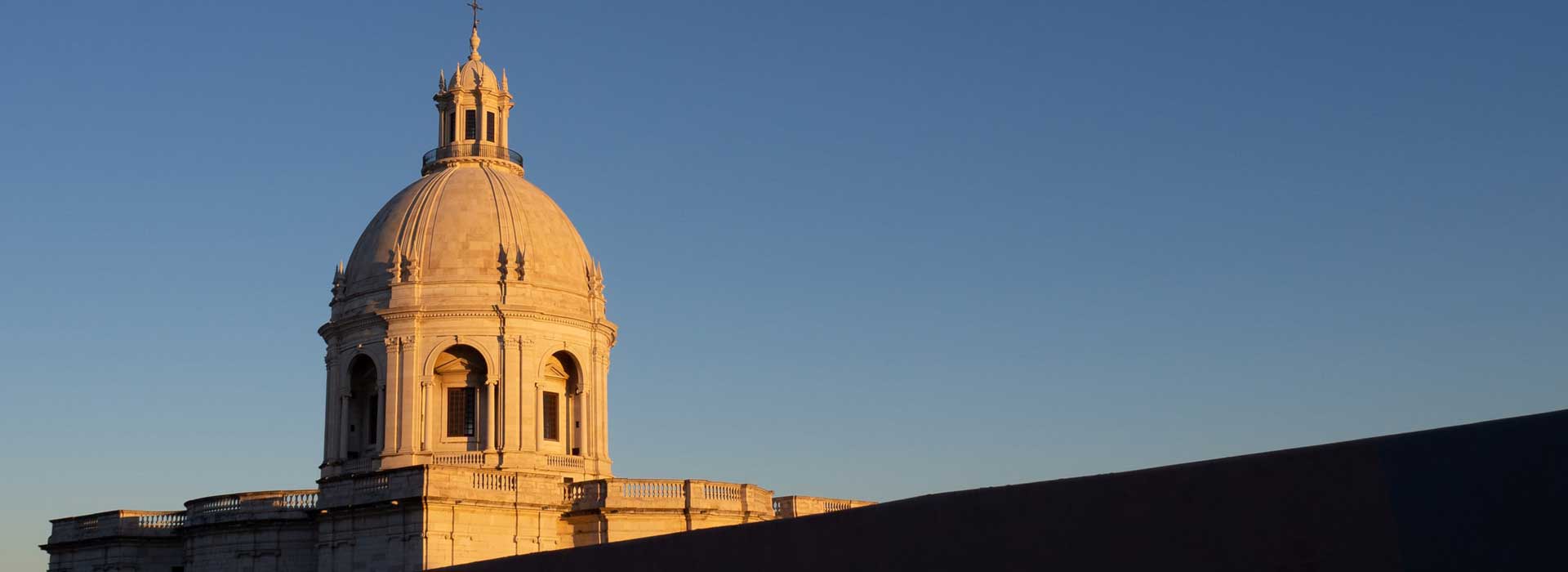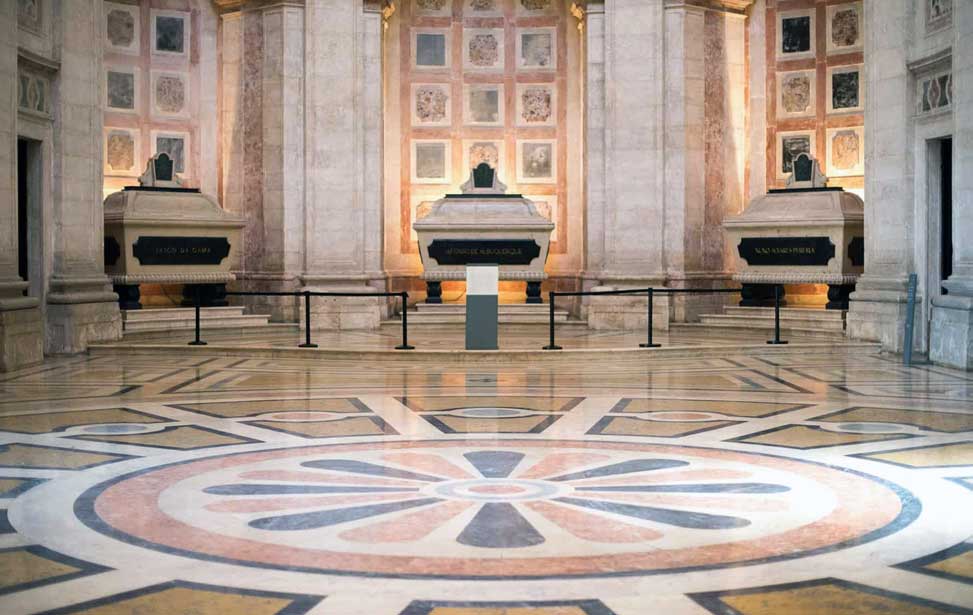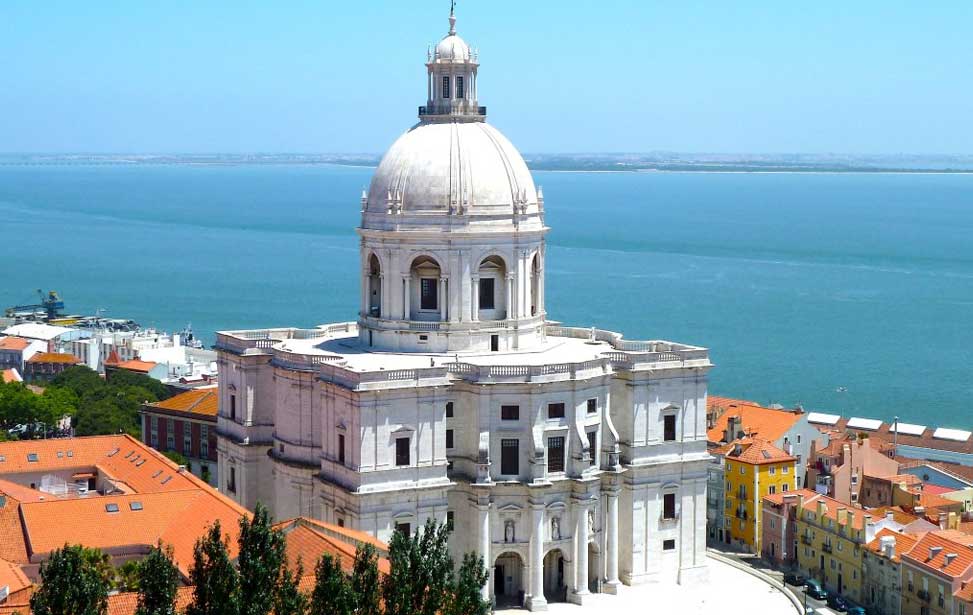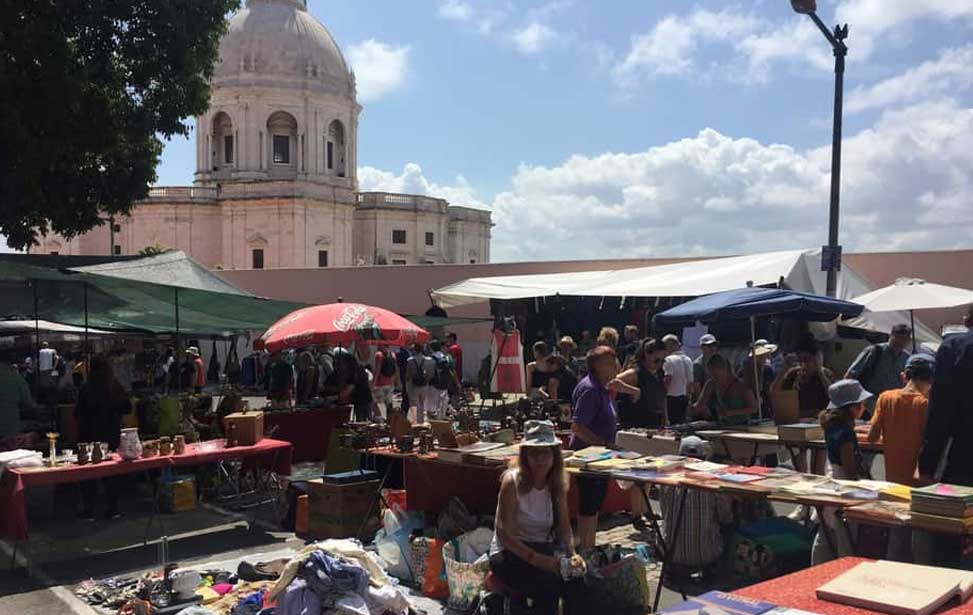
National Pantheon of Santa Engracia
Welcome to the National Pantheon of Santa Engrácia, a majestic architectural marvel nestled in the heart of Lisbon. Originally constructed as a church in the 17th century, this iconic monument was converted into a pantheon in the 20th century. Its impressive dome, one of the largest in the world, dominates the city skyline and serves as a symbol of Portugal's rich cultural heritage.
Within its walls, visitors can explore the final resting place of some of Portugal's most distinguished figures, including presidents, writers, and public figures, commemorated for their significant contributions to the nation's history. As you wander through the elegant interior adorned with intricate marble sculptures and ornate decorations, you'll be transported through centuries of Portuguese history and tradition.
From the rooftop terrace, enjoy panoramic views of Lisbon's historic Alfama district and the picturesque Tagus River, offering a breathtaking backdrop to your visit. Whether you're a history enthusiast, an architecture buff, or simply seeking a memorable cultural experience, the National Pantheon of Santa Engrácia invites you to discover the storied legacy of Portugal in a truly remarkable setting. Plan your visit today and immerse yourself in the grandeur of this iconic landmark.
National Pantheon: Skip the line tickets

With this entrance ticket you can gain entry to the National Pantheon at your leisure. Book with confidence with FREE CANCELLATION Buy online before you arrive to avoid queues and have the convenience of the e-ticket on your phone…

• The price includes a single entrance to the venue. Tiqets covers the cost of payment processing and provides you with customer service seven days a week.
• It is strictly forbidden to eat and smoke inside the pantheon
Tuesday – Sunday: 10h00 - 17h00, Monday: CLOSED (last admission at 16h30)
• Combination Tickets Available…
About

National Pantheon (Panteão Nacional) - Marble Interior
The newer edifice was designed by architect João Antunes (1642-1712) in the Baroque style with an octagonal floor plan centred on a Greek cross. Inspiration for the multi-coloured marble-clad interior is believed to have come from Peruzzi's design for St. Peter's basilica in Rome. In 1681 during the reconstruction project was paused whilst awaiting funds, the unsupported chapel collapsed bringing most of the structure crashing to the ground. Work resumed five years later only to come to a halt again following Antunes' death and the church remained unconsecrated. Further delays occurred over the next two centuries due to successive wars sapping the country's finances. The synonym "Obras de Santa Engrácia" became common use in the Portuguese language for work left unfinished.
Here too are Humberto Delgado (1906-1965), a former right-wing general who tried to overthrow the dictatorship of the New State before he was assisinaed, writers João de Deus (1830-1896), Almeida Garrett (1799-1854), Guerra Junqueiro (1850-1923), Aquilino Ribeiro (1885-1963) and Sophia de Mello Breyner Andresen (1919-2004), Amália Rodrigues (1799-1854), the famous fado singer, and Benfica soccer star Eusébio (1942-2014).
There are memorials for other Portuguese digintaries: Afonso de Albuquerque (c. 1453-1515), Pedro Álvares Cabral (c. 1467-1520), Luís de Camões (c. 1524-1580), Nuno Álvares Pereira (1360-1431), Vasco da Gama (c. 1460-1524) and Henry the Navigator (1394-1460).
Ongoing concerns about the ability of the church to support such an ambitious dome came to rest finally following the 1910 revolution. The completion of the National Pantheon became a symbol of national pride and the dome was finally finished in 1966. Today it is a distinct landmark in the Alfama. The terrace under the dome offers 360º views across Lisbon and the riverside.
Tuesday – Sunday: 10h00 - 17h00, Monday: CLOSED (last admission at 16h30)
Adult: €3.00, Concessionary: €1,50,

National Pantheon (Panteão Nacional)

Feira da Ladra flea market
Getting to the National Pantheon (Panteão Nacional)
712, 734, 735, 704, 745, 759, 781, 782 | 28ESanto Apolonia (Blue line)
Contact Details
Panteão Nacional – Igreja de Santa Engrácia, 1100 - 47, Lisbon, Portugal.
38° 42' 53.2" N | 09° 07' 29.9" W | +351 218 854 820


 Lisbon Card Discounts
Lisbon Card Discounts






